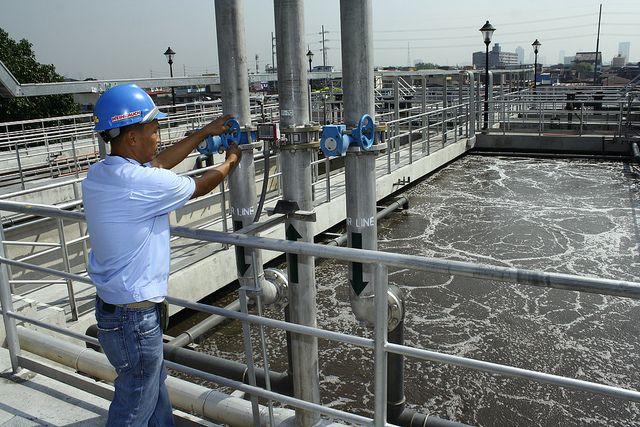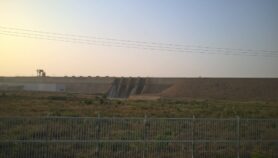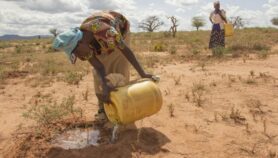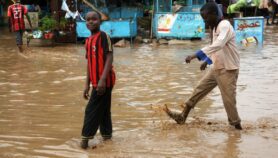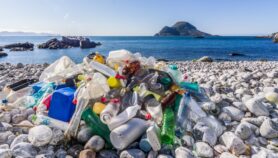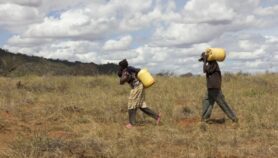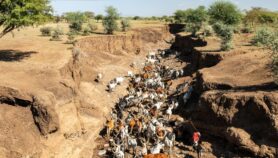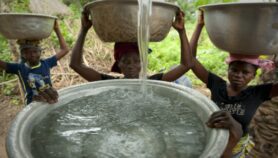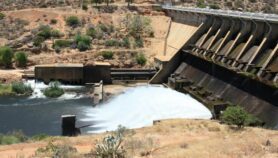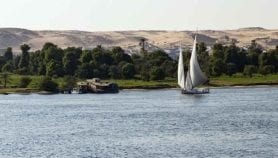By: Sipho Kings
Send to a friend
The details you provide on this page will not be used to send unsolicited email, and will not be sold to a 3rd party. See privacy policy.
A convoy of fuel trucks blocks the single-lane road, moving in a close herd. Warm air floods through the window. The scenery drags past mountains and thorny acacia.
A gravel road leads to the S Von Bach dam. It is one of three dams supplying Windhoek with water, and it is nearly empty.
Windhoek’s water problem
For Windhoek, home to Namibia’s industry and 20 per cent of its 2.3 million people, this is an intractable problem. The national utility, NamWater, says the city has six months of water left. After that, it will be up to people’s ingenuity to keep the taps dripping.
But drought is nothing new in Namibia. The only consistent rivers form the country’s northern and southern borders. Its ephemeral rivers only flow when it floods, looking like lazy brown snakes with full bellies lounging on a parched and cracked countryside.
South of Von Bach dam lies Windhoek, encased in a lumpy basket of hills.
“When you have no other options, people will accept anything you put on the table.”
Pierre van Rensburg, City of Windhoek
The dry riverbeds, overwhelmed by reeds and rubbish, are crossed by drifts. Red and white metre sticks give an idea of how deep they are during flash floods that bash Windhoek.
“When you have no other options, people will accept anything you put on the table,” says Pierre van Rensburg, one of the City of Windhoek’s chief water engineers, as he cancels incoming calls to talk about his city’s relationship with water. “It was decided that we would reuse our wastewater.”
The 30-minute drive to the jewel in Windhoek’s water supply system starts in the original city centre, which is characterised by wide boulevards and old, large-brick offices, and ends next to the fields of zinc settlements to the north where people have to queue with buckets to get water.
In Namibia, water scarcity and environmental realities are taught from a young age. “If you can get one student interested, they’ll go home excited and talk to five family members,” van Rensburg says.
Innovation out of necessity
The Goreangab Water Reclamation Plant was born out of Windhoek’s water emergency in the 1960s. It was the first in the world to take municipal wastewater and turn it into municipal drinking water, van Rensburg adds.
Older and lagging behind technologically, it has been turned into a plant for irrigation water. While the technology is accepted globally, drinking water that was once wastewater is not except in Windhoek.
From the top of Goreangab, gravity pushes the wastewater through large flotation ponds and aeration tanks. These disturb, swirl and bubble the sewage until the last few pollutants are caught up in membranes. The water that comes out is clean.
“People are always trying to catch us out so they can say that reusing water doesn’t work. They haven’t succeeded,” Van Rensburg says, his voice a shade removed from smug. He has the same air of confident pride that Namibians have when talking about their unique water system.
Van Rensburg says being a world leader places incredible pressure on everyone involved. “We can’t have one slip up because just one illness will have serious repercussions,” he adds. This has not happened to date.
From the plant, water is piped to the centre of Windhoek, where it is mixed with water coming from NamWater. A quarter of all the water coming out of taps in the city had once left the city in a sewage pipe. That water costs 11 Namibian dollars (about 70 US cents) per cubic metre to supply. NamWater charges about US$1.
Van Rensburg — who first came to the plant as an intern expecting to make coffee and instead got to work with its chief engineer — criss-crosses the world talking about the plant. South Africa has been a frequent destination. But nobody seems to be listening. A multi-million dollar plant in Australia was stopped after a referendum.
Only Malaysia and Texas in the United States have plants working on a large scale.
South Africa has one working plant in the Western Cape town of Beaufort West. It didn’t look across the Orange River for tips. Van Rensburg says Namibians are used to being snubbed by their neighbour. “People will only change when they have no other options, so let’s see if you then realise there’s a technology that works next door.”
Influence of tech perception
The technology works, but perception is key. In South Africa, eThekwini in KwaZulu-Natal tried to get ten per cent of its water from two reuse plants. But a community petition objected, citing religious objections, and a belief that other sources of water could be found. Municipal engineers have previously told the general public that there is really very little they can do about “irrational fears”. Thus, national government has had to turn to desalination plants – producing water at double, sometimes triple, the cost of other sources.
“Namibia has always had this problem of not making the tough decisions and continuing to build in the middle of the country, where we have no water.”
Lesley-Anne van Wyk, Hanns Seidel Foundation, Namibia
The worst drought in a century, a precursor of a climate impacted future, is moving the discussion to a point where there are few solutions on the table.
That future is unfolding in Namibia. Windhoek’s three dams overflowed once in the 1970s, and again in 2006. Since then the water has spilt over their walls on three occasions. In 2012 and 2014, no water flowed into the dams. The evaporation rate is ten times the annual rainfall of 350 millimetres. Floods and water scarcity have forced Windhoek to turn to aquifers that used to supply it, turning them into underground storage. By 2019, this will give the city 18-months water supply, says Van Rensburg.
However, a similar solution is impossible in South Africa – despite similar rock formations – because extensive mining has irreparably polluted most underground aquifers, Van Rensburg explains.
Lesley-Anne van Wyk, project coordinator for the Environmental Awareness and Climate Change Project at the Hanns Seidel Foundation Namibia, says:
“Water is obviously — finally — topical in Namibia because we are staring at the cliff’s edge, again.”
Van Wyk explains that the water scarce country is bedevilled by the human tendency to only worry about problems when it is too late to take preventative action. “In some ways leaving it late has made us great at innovating: nothing drives technology like necessity.”
Water innovation not enough
But an artificial construction boom – many people in Namibia talk sarcastically about the “great boom” being the only thing propping up the economy – means water is not at the heart of forward thinking, she says. “Namibia has always had this problem of not making the tough decisions and continuing to build in the middle of the country, where we have no water,” van Wyk adds.
He takes another long sip. Beer is a welcome change to Windhoek’s tap water. “We’re in a better home than our neighbours because of our technological innovation, but this is still a hell of a crisis,” says the radio presenter.
Disclaimer: This piece was co-produced by SciDev.Net’s Sub-Saharan Africa English and the Mail & Guardian newspaper in South Africa, as part of a science journalism capacity building initiative, funded by the Wellcome Trust.


